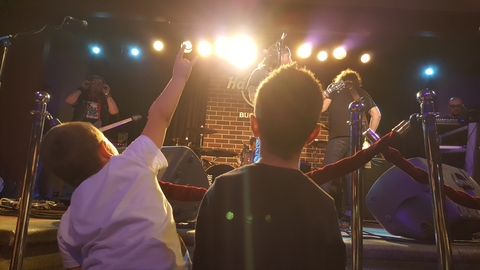Understanding MIDI A Beginners Guide to Music Production

If you’ve ever been curious about how music is created in the digital age, look no further than MIDI. In this beginner’s guide to music production, we’ll break down the components of MIDI, how it works, different types of MIDI messages, and how it communicates between devices.
We’ll also explore the equipment you need for MIDI, including controllers, interfaces, and sequencers. Plus, we’ll dive into the benefits of using MIDI in music production, and provide tips on getting started with this versatile technology.
Understanding MIDI?
MIDI, which stands for Musical Instrument Digital Interface, is a fundamental technology in music production that allows various electronic musical devices to communicate with each other.
Understanding MIDI is crucial for musicians and producers alike, as it provides a standardised language for transmitting musical data between instruments, controllers, and software. By using MIDI, musicians can easily record, edit, and playback their performances, whilst also enabling seamless integration of hardware and software components in a studio setup. This versatile technology plays a key role in facilitating the creative process by enabling real-time control over virtual instruments and allowing for intricate manipulation of sound parameters within a digital audio workstation.
What Are The Components Of MIDI?
Understanding the components of MIDI involves familiarizing yourself with devices like MIDI controllers, synthesizers, keyboards, sequencers, as well as the various types of MIDI messages, channels, protocols, and files.
MIDI controllers are essential components that allow musicians and producers to interact with their software and hardware. These controllers provide tactile input and control over parameters in real-time, enabling users to manipulate sounds seamlessly.
Synthesizers, on the other hand, generate sound electronically through oscillators, filters, and modulators, responding to MIDI signals to produce music.
Keyboards serve as the primary input device for MIDI performance, translating key presses into digital signals.
Sequencers are tools used to record, edit, and play back MIDI data in a structured manner, facilitating the creation of complex musical arrangements.
How Does MIDI Work?
MIDI operates by transmitting data in the form of MIDI messages through designated MIDI channels according to a specific MIDI protocol, utilising signals like MIDI clock and interfaces for seamless communication.
These MIDI messages contain information about musical notes, pitch, velocity, and other parameters that allow electronic instruments and devices to communicate with each other. Each MIDI channel can carry multiple messages simultaneously, enabling different instruments or voices to be played independently. The standard MIDI protocol ensures compatibility and uniformity across different MIDI devices, ensuring that they can communicate effectively.
Interfaces such as MIDI cables or USB connections are used to physically connect MIDI devices, allowing the transfer of MIDI data between them. MIDI signals, including note-on, note-off, and control change messages, are crucial for establishing and maintaining connectivity between MIDI-compatible equipment.
What Are The Different Types Of MIDI Messages?
MIDI messages encompass a variety of types such as notes, events, and commands that form the basis of MIDI connectivity, enabling diverse applications in music production and performance.
These MIDI messages play a critical role in transmitting musical information between electronic devices, with MIDI notes serving as the primary means of conveying pitch and duration data.
Within MIDI applications, note messages carry essential musical information, allowing for the accurate reproduction of melodies, harmonies, and rhythms. In addition to note messages, MIDI events provide commands for various musical actions, such as changing instrument settings or modifying sound parameters in real-time performances, showcasing the versatility and flexibility of MIDI technology in the music industry.
How Does MIDI Communicate Between Devices?
MIDI communication between devices is established through meticulous setup, implementation of MIDI protocols, mapping MIDI controllers, programming MIDI functions, and leveraging the latest MIDI technologies.
Setting up MIDI communication involves ensuring that both devices are connected via MIDI cables or a MIDI interface. Implementing MIDI protocols such as note on/off messages, control change messages, and program change messages facilitate the exchange of musical data. Mapping MIDI controllers allows users to assign specific functions to different knobs, sliders, and buttons on their MIDI devices.
By programming MIDI functions, users can customise their setup to suit their specific needs, whether for music production, live performances, or other creative applications. With advancements in MIDI technology, wireless MIDI connections, enhanced MIDI capabilities, and improved interoperability across different MIDI devices are now possible.
What Equipment Do You Need For MIDI?
To engage with MIDI technology effectively, essential equipment like MIDI interfaces, input/output devices, and proper mapping tools are required to establish seamless connections and operations.
These MIDI devices act as the bridge between your instruments and your computer, allowing for smooth communication and control. Having a reliable MIDI interface ensures that the signals are accurately transmitted, while input/output devices help facilitate the exchange of MIDI data. Utilising MIDI mapping tools enables users to customise and optimise the functionality of their MIDI setup according to their specific requirements, providing a personalised and efficient workflow for music production and performance.
What Is A MIDI Controller?
A MIDI controller is a versatile device that allows users to interact with MIDI technology by triggering and manipulating sound parameters through customised setups and advanced implementation techniques.
It serves as a bridge between the physical world and digital audio workstations, enabling musicians, producers, and DJs to express their creativity in a dynamic way. When setting up a MIDI controller, considerations such as key layout, knob sensitivity, pad responsiveness, and overall ergonomic design play a crucial role in enhancing workflow efficiency.
Technologically, MIDI controllers utilise MIDI messages to communicate with software, sending data about note on/off, pitch, velocity, modulation, and more. These controllers find applications in music production, live performances, DJing, virtual instrument control, and even lighting and visual effects manipulation within the entertainment industry.
What Is A MIDI Interface?
A MIDI interface serves as the bridge between MIDI input and output devices, facilitating seamless communication and data transfer between MIDI-compatible instruments and equipment.
By connecting MIDI devices, these interfaces enable musicians and producers to control various parameters and send performance data, such as notes, pitch, velocity, and more. They play a crucial role in managing the flow of MIDI information within a network, ensuring that signals are accurately routed to the intended destinations.
MIDI interfaces support multiple channels, allowing users to control multiple instruments simultaneously. These interfaces enhance the efficiency and flexibility of working with MIDI technology, serving as essential tools for creating and producing music.
What Is A MIDI Sequencer?
A MIDI sequencer is a powerful tool used for recording, editing, and arranging MIDI tracks, enabling precise control over musical compositions and sequences.
These versatile devices serve as the backbone of music production workflows, allowing musicians and producers to create intricate melodies, layer multiple tracks, and fine-tune every aspect of a composition.
With the ability to control parameters such as note length, pitch, velocity, and timing, MIDI sequencers offer a level of precision and flexibility that traditional recording methods cannot match.
They streamline the process of organising and managing complex arrangements, making it easier to experiment with different musical ideas and structures.
What Are The Benefits Of Using MIDI In Music Production?
Utilising MIDI in music production offers numerous advantages, including enhanced production capabilities, seamless editing options, playback flexibility, and integration with dedicated recording software.
By leveraging MIDI technology, producers can achieve higher production quality by fine-tuning every aspect of their music tracks with precision. The editing efficiency provided by MIDI allows for quick adjustments to notes, timing, and dynamics, resulting in a more polished final product. MIDI’s playback versatility empowers musicians to experiment with different instrument sounds and arrangements effortlessly, enhancing creativity. Its compatibility with specialised recording software ensures that producers can seamlessly transfer their MIDI compositions into professional-grade audio recordings.
Versatility And Flexibility
One of the key benefits of MIDI in music production is its unparalleled versatility and flexibility, enabled by standardised communication protocols, diverse hardware options, software compatibility, and instrument integration.
MIDI technology has become the backbone of modern music production, offering musicians and producers a wide array of tools to streamline their creative processes. By adhering to industry standards, MIDI ensures seamless communication between different devices, allowing for the smooth exchange of musical data. The availability of compatible hardware and software solutions further enhances the user experience, empowering artists to effortlessly connect and control an extensive range of MIDI instruments from keyboards and drum pads to synthesizers and MIDI controllers.
Easy Editing And Manipulation
MIDI’s ease of editing and manipulation capabilities revolutionize music production by offering intuitive control over effects, communication between devices, sound editing, and overall production adjustments.
This digital protocol streamlines the workflow for music producers, allowing them to seamlessly integrate various effects and instruments, resulting in unparalleled sound design possibilities.
MIDI enables efficient communication between different hardware and software, increasing collaboration opportunities and enhancing overall creative output.
The flexibility provided by MIDI in editing workflows empowers artists to experiment with different arrangements, tempos, and sounds with ease, ultimately leading to more refined and polished music compositions.
Precise Timing And Control
MIDI technology excels in providing precise timing and control capabilities for recording, facilitating accurate synchronization, real-time data control, and seamless integration of musical elements.
It allows musicians and producers to maintain consistency and accuracy in their compositions by making it easy to capture every note with exact precision. With MIDI, the timing of each note can be meticulously adjusted to achieve the desired musical expression. The data control mechanisms in MIDI enable users to manipulate various aspects of sound production with unparalleled flexibility and ease. This level of command over musical elements ensures that every detail of a composition can be fine-tuned to perfection, ultimately enhancing the overall quality of the final product.
Cost-Effective
The cost-effectiveness of MIDI technology derives from its efficient use of data transmission through lightweight messages, streamlined port configurations, system compatibility, and the availability of diverse tools for MIDI-based workflows.
MIDI’s data efficiency not only ensures smooth and rapid communication between devices but also significantly reduces the processing load on systems, making it a preferred choice for music producers and professionals alike.
The simplified port setups in MIDI technology allow for easy connection and integration of multiple devices, minimising the time and effort required for configuration. Its system-wide compatibility enables seamless communication across various platforms, ensuring that MIDI setups are versatile and adaptable in different environments.
The range of tools and resources available for optimising MIDI processes further enhances its economic advantages by offering users the flexibility to customise their workflows and achieve efficient results.
How To Get Started With MIDI?
Embarking on your MIDI journey involves selecting the right equipment, establishing proper connections, configuring software setups, and delving into creative music-making through MIDI controller mappings.
- Begin by choosing a MIDI controller that aligns with your music production needs and preferences – whether it’s a keyboard, drum pad, or a combination of both.
- Once you have your MIDI controller, connect it to your computer or music production setup using a USB or MIDI cable.
- Next, ensure that your software, such as a digital audio workstation (DAW), recognises the MIDI input. Dive into the software settings to assign functions to different knobs, sliders, and buttons on your MIDI controller, enabling you to control various parameters in your music production software. This process, known as MIDI controller mapping, allows for a tailored and intuitive music-making experience.
Choose Your Equipment
The initial step in getting started with MIDI is choosing the appropriate equipment that aligns with your music production needs, involving setup considerations, device selection, tool integration, and musical exploration.
When selecting MIDI equipment, it’s essential to consider the compatibility of your devices to ensure seamless communication between them. Different MIDI setups offer unique possibilities such as combining hardware and software instruments for a rich and diverse sound palette. By understanding your setup requirements and the musical goals you aim to achieve, you can create a tailored MIDI environment that enhances your creative workflow and opens up new avenues for musical expression.
Connect Your MIDI Devices
Connecting MIDI devices requires establishing proper output channels, interfacing through MIDI interfaces, syncing signals using MIDI clock references, and ensuring seamless data transmission for effective device communication.
Output configurations are essential in assigning specific channels to devices for sending and receiving MIDI data. The interface plays a crucial role in converting MIDI messages to electrical signals and vice versa. Signal synchronization ensures that all connected devices are in perfect harmony, avoiding delays or errors in communication. The MIDI clock acts as a master timekeeper, keeping all devices in sync and ensuring accurate transmission of data packets between them.
Set Up Your MIDI Software
Configuring MIDI software involves creating tracks, setting up instruments, integrating effects, and optimising software parameters to enable a productive and creative workflow for music production.
Once the initial setup is complete, users can delve into the intricate process of track creation, where individual elements like drums, bass, synths, and vocals can be added and arranged effortlessly. Assigning specific instruments to each track allows for a coherent composition. Integrating effects such as reverbs, delays, and modulation further enhances the sonic landscape of the music. Customisation of software settings plays a crucial role in tailoring the MIDI environment according to personal preferences, ensuring a seamless and enjoyable production experience.
Start Creating Music With MIDI
Embark on your musical journey with MIDI by engaging in recording sessions, editing musical elements, synthesising notes, and orchestrating events through MIDI technology for creative music production endeavours.
Delving into the realm of MIDI empowers you to tap into the endless possibilities of music creation. With MIDI, you can fine-tune every aspect of your composition, from adjusting tempo and dynamics to experimenting with different instrument sounds. By combining various software and hardware tools, you can craft intricate melodies, layer harmonies, and sculpt complex rhythms with precision. Whether you’re a seasoned pro or a budding musician, MIDI offers a versatile platform to bring your musical ideas to life and explore the boundless world of sound synthesis.
Are you an aspiring writer, producer, engineer, artist or musician looking for the best courses for music producers? Hone your sound, explore your talent and unlock unique opportunities in music technology with Elevate’s online music production courses.
From the blog

Rockstars in Training: The Best Kids’ Electric Guitars for 2024

Redefining Your Riffs: How Electric Guitar Strings Shape Your Sound


